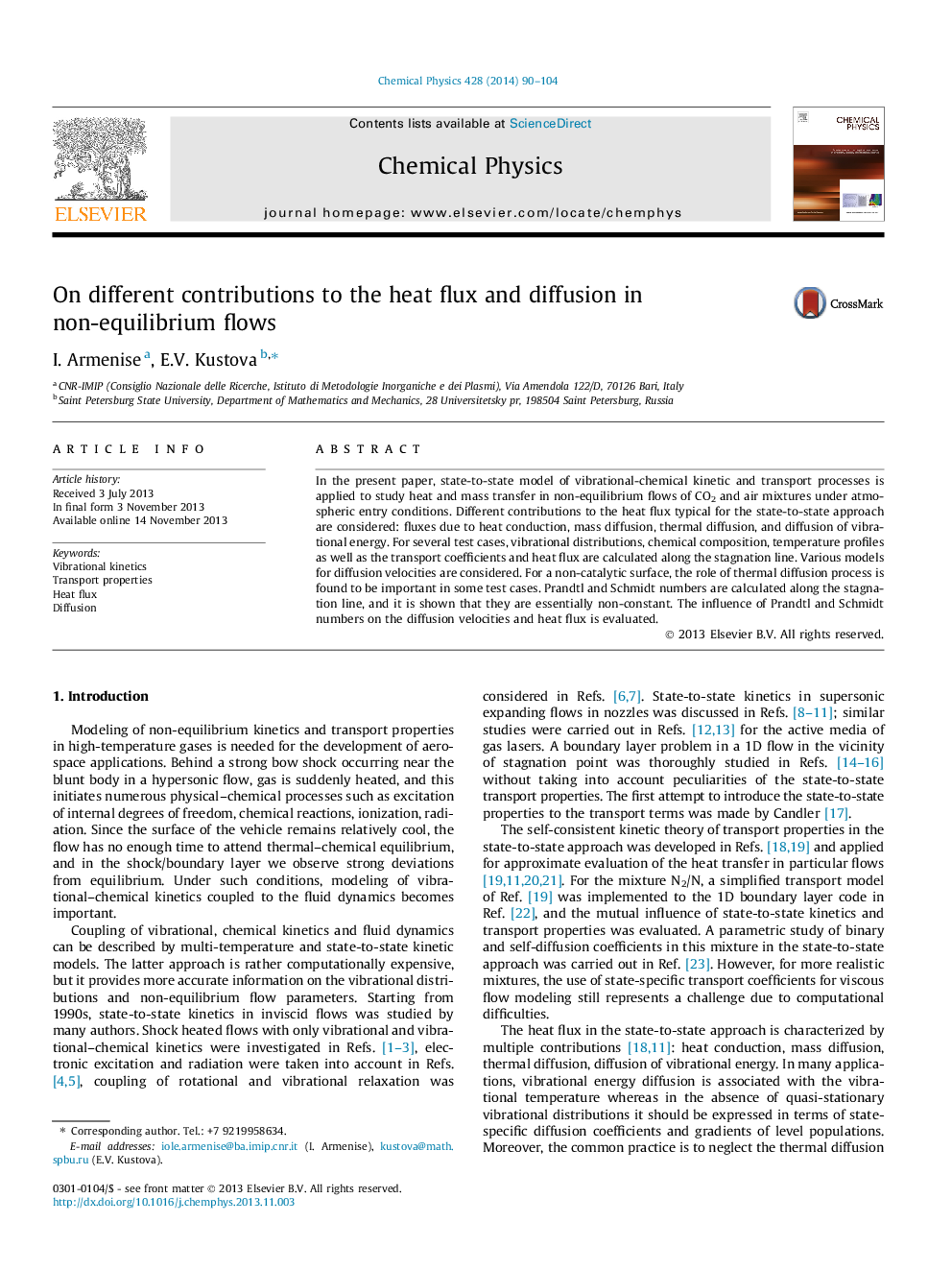| Article ID | Journal | Published Year | Pages | File Type |
|---|---|---|---|---|
| 5373735 | Chemical Physics | 2014 | 15 Pages |
â¢Heat and mass transfer in strongly non-equilibrium flows are studied using state-to-state model.â¢For a non-catalytic surface, heat conduction and thermal diffusion play main role in heat transfer.â¢Contribution of vibrational energy diffusion depends on deviation from thermal equilibrium.â¢For a catalytic surface, mass diffusion is the main process responsible for heat transfer.
In the present paper, state-to-state model of vibrational-chemical kinetic and transport processes is applied to study heat and mass transfer in non-equilibrium flows of CO2 and air mixtures under atmospheric entry conditions. Different contributions to the heat flux typical for the state-to-state approach are considered: fluxes due to heat conduction, mass diffusion, thermal diffusion, and diffusion of vibrational energy. For several test cases, vibrational distributions, chemical composition, temperature profiles as well as the transport coefficients and heat flux are calculated along the stagnation line. Various models for diffusion velocities are considered. For a non-catalytic surface, the role of thermal diffusion process is found to be important in some test cases. Prandtl and Schmidt numbers are calculated along the stagnation line, and it is shown that they are essentially non-constant. The influence of Prandtl and Schmidt numbers on the diffusion velocities and heat flux is evaluated.
Graphical abstractDownload full-size image
